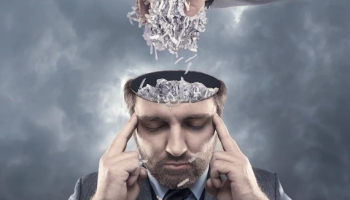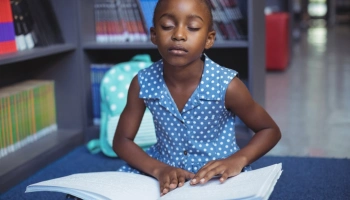Inclusion, Not Indoctrination
written By: Kemuel Kefas
5 min read. June 15 2023

Photo Credit: Freepik
Alex, a devoted believer of a certain religion, works in a manufacturing company that upholds diversity and inclusion as one of its core values. Excited about an upcoming festival important to him and his religion, Alex invites his colleagues to join in the celebrations. To his disappointment, some of Alex’s co-workers politely decline his invitation, explaining that they belong to other religions, and their beliefs do not align with Alex’s religious practices.
Unintentionally, conflict arises when Alex, feeling disappointed,
accuses his colleagues of discrimination. He argues that by not
participating in his festival, they are disrespecting his
religious identity. The situation becomes tense as
misunderstandings grow, affecting their once harmonious
workplace
Fortunately, Sarah, a seasoned colleague, steps in to mediate. She
brings everyone together for a candid discussion about religious
freedom and understanding. Sarah emphasizes that respect for
individual beliefs is crucial in a diverse environment like
theirs. She reminds them that every person is entitled to observe
their religion without being labeled discriminatory.
Diversity is an intricate part of our world, encompassing a myriad
of cultures, traditions, and perspectives that shape our global
community. It is an irrefutable aspect that cannot be severed from
our world, no matter how much we try. Diversity, being the
authenticity of our world, needs inclusion to ensure individuals of
all backgrounds, identities, and perspectives are valued, respected,
and given equal opportunities and representation.
However, it is a matter of concern that the promotion of inclusion
may lead to indoctrination, where certain beliefs or ideologies are
imposed upon individuals, due to lack of understanding of what
inclusion is. This article aims to give clear insight on the concept
of inclusion, and make a clear distinction between inclusion and
indoctrination.
Understanding Inclusion
Today, inclusion has taken center stage as a major topic in our
society. It has become a trend, even serving as the new
advertisement jingle for businesses. However, it is important to
understand that the word “inclusion” is more than just a buzzword
Our understanding of inclusion as mere tolerance is a shallow
interpretation of this broad concept. Inclusion surpasses token
gestures of tolerance. Rather, it is the genuine recognition and
appreciation of differences in race, ethnicity, gender, religion,
socio-economic status, and more which requires conscious efforts to
create a culture of acceptance and belonging.
The goal of inclusion is to foster an environment that not only
acknowledges the existence of diverse backgrounds, but actively
engages and empowers individuals from these diverse communities.
True inclusion necessitates breaking down barriers, eliminating
bias, and fostering an environment where all individuals are treated
with respect and dignity. Through inclusion, we recognize everyone’s
right to be.
The Pitfall of Indoctrination
As indispensable as inclusion is, our lack of understanding of the
concept as led us to misinterpret its true meaning. Regrettably, in
our pursuit of inclusion, we, at times, inadvertently move towards
indoctrination.
Indoctrination involves the imposition of a specific set of beliefs
and ideas on others, often without allowing critical thinking or
dissenting viewpoints. In simpler terms, it is basically “shoving”
your beliefs down people’s throats. When a person is being
indoctrinated, they are manipulated into accepting and adopting the
beliefs of someone else without being allowed to reason for
themselves. This way, their right to freedom of thought, conscience,
and religion are eroded.
Indoctrination can occur directly where beliefs are forcefully
imposed or indirectly, masked as the inclusion ‘movement’. It is
critical to note that the beliefs and convictions being dumped on
people are not necessarily bad ones. Either way, it takes away the
ability for people to think for themselves and practice what is
right by them.
Differentiating Inclusion From Indoctrination
Over time, the façade of inclusivity has been used to push certain
ideologies, stifling open dialogue and respectful exchange of ideas.
How then do we differentiate inclusion from indoctrination.
1.Respect for personal autonomy:
Inclusion values and respects individual autonomy. It allows people to hold their beliefs and opinions without coercion. Indoctrination, on the other hand, imposes specific beliefs on others, room from a debate or critical thinking. Indoctrination takes away the right of a person to be who they are. Inclusion opens this door.
2. Encouragement of diverse perspectives:
Inclusion embraces diversity. It provides room for creativity and diverse experiences and ideologies. It understands that we are all different, and we cannot all think the same and practice the same beliefs. Indoctrination does not embrace diversity, or identify with it, as it recognizes only one belief.
3. Empowerment vs. Manipulation:
Inclusion empowers people with the environment needed for self-expression and growth, fostering a sense of belonging and participation. Indoctrination uses manipulation to persuade people to adopt specific beliefs, discouraging the exploration of other viewpoints.
4. Critical thinking and free will:
Indoctrination replaces critical thinking and free will with dogma. It leaves little to no room for independent thought. Inclusion, however, gives us the freedom to act based on our personal conviction
5. Openness to debate and change:
Inclusion embraces respectful debates, collective thinking, and welcomes the possibility of change. Indoctrination, however, makes no room for external opinions, talk more of debates.
6. Balance and fairness:
Inclusion aims at balance and fairness for our vast and diverse world. It aims to create a level playing field where diverse perspectives are valued. Indoctrination, however, seeks to dominate. While provision is being made through inclusion, for voices to be heard and considered, indoctrination takes it all away, beginning with your right to think.
Alex, in the anecdote above, had the purest of intentions. He wanted
his religious beliefs to be recognized and respected. However, he
ignored the fact that his colleagues, themselves, had their
religious beliefs which did not necessarily have to align with his.
Partaking in his religious celebration would have disrespected their
religion. A respectful decline in this case in most appropriate.
This teaches us that we can respect people’s beliefs, culture, and
heritage without actively participating in them. The essence of
diversity is that we cannot all have the same perspective on every
topic. We need to learn to accept this. The fact that someone
doesn’t see things from your standpoint does not make them the
enemy. We do not need to force our ideas on anyone. Inclusion is not
about choosing sides, and manipulating others to be on your side.
When we do this, it is indoctrination.
You may also like:

Religion: The Accidental Enemy
Where I come from, the worst enemy is religion. Religion is simply a set of principles that guides our way of life. Merriam-Webster dictionary defines it as “an organized system of beliefs, ceremonies, and rules used to worship a god or a group of gods”. This singular institution has influenced and shaped not...

Diversity And Inclusion: This Ability
Growing up as a young child, I would sit with my mum and listen to songs ranging from gospel, country, reggae, RnB and they were mostly oldies. One of such songs I fell in love with was “signed, sealed, delivered, I’m yours” by Stevie…

Self-Awareness: Why Do You Need It?
A newborn cub loses its mother at childbirth and is adopted by a mother sheep. The lion grows up believing that it was a sheep. It bleated and ate grass like a sheep. But, it was never truly happy. It always felt there was something missing. Plus, the other sheep...
Subscribe To Our Blog via Email
Enter your email address to subscribe to our blog and receive notifications of new posts by email.
John Doe
Oct 9 2023
Sed ut perspiciatis unde omnis iste natus error sit voluptatem accusantium doloremque laudantium, totam rem aperiam, eaque ipsa quae ab illo inventore veritatis et quasi.
John Doe
Oct 9 2023
Sed ut perspiciatis unde omnis iste natus error sit voluptatem accusantium doloremque laudantium, totam rem aperiam, eaque ipsa quae ab illo inventore veritatis et quasi.